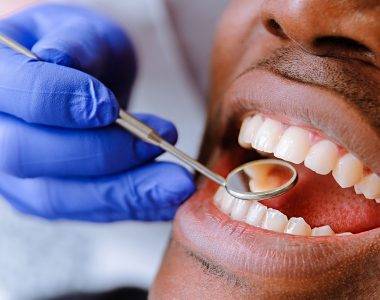
Infectious diseases have been a constant companion of humanity throughout history. From the devastating plagues of the past to the ongoing challenges posed by emerging pathogens, understanding these diseases is crucial for our well-being. In this comprehensive guide, we will delve into the intricate world of infectious diseases, exploring their causes, effects on the human body, prevention measures, and cutting-edge treatment strategies.
Section 1: What Are Infectious Diseases?
Defining Infectious Diseases
Infectious diseases, often referred to as communicable diseases or transmissible diseases, are caused by pathogenic microorganisms such as bacteria, viruses, fungi, and parasites. These microorganisms can spread from one person to another, from animals to humans, or through environmental sources.
Types of Infectious Agents
Infectious agents encompass a diverse array of microorganisms, including:
Bacteria
Bacterial infections are caused by various bacteria and can affect virtually any organ or system in the body. Common bacterial infections include strep throat, tuberculosis, and urinary tract infections.
Statistics: According to the World Health Organization (WHO), tuberculosis (TB) remains one of the world’s deadliest infectious killers, with an estimated 10 million new TB cases in 2020.
Viruses
Viruses are responsible for a wide range of diseases, from the common cold and flu to more severe infections like HIV/AIDS and COVID-19.
Statistics: As of September 2021, the COVID-19 pandemic has infected over 200 million people worldwide, with millions of deaths reported. It serves as a stark reminder of the devastating impact viruses can have on global health.
Fungi
Fungal infections, such as athlete’s foot and candidiasis, are caused by various types of fungi. They can affect the skin, nails, and internal organs.
Real-Life Example: Candida Infections Candida is a common type of fungus that can cause infections in various parts of the body. Jane, a 35-year-old woman, experienced a candida infection in her mouth (oral thrush) after a course of antibiotics disrupted the balance of microorganisms in her mouth. Her case highlights how even opportunistic pathogens like fungi can cause infections.
Parasites
Parasitic infections, like malaria and intestinal worms, are caused by parasites that live and reproduce in the host’s body.
Statistics: Malaria, caused by Plasmodium parasites, continues to be a major global health concern, with an estimated 229 million cases and 409,000 deaths in 2019, according to the WHO.
How Do Infectious Diseases Spread?
Infectious diseases can spread through various modes of transmission, including:
1. Direct Contact
Infections can be transmitted through direct contact with an infected person, such as through touch, kissing, or sexual contact.
Real-Life Example: Sexually Transmitted Infections (STIs) STIs, including chlamydia, gonorrhoea, and syphilis, are transmitted through sexual contact. The consistent and correct use of barrier methods like condoms can significantly reduce the risk of transmission.
2. Airborne Transmission
Pathogens can become airborne through respiratory droplets when an infected person coughs or sneezes. This mode of transmission is common for diseases like tuberculosis and COVID-19.
Statistics: According to the CDC, tuberculosis (TB) is among the top 10 causes of death worldwide, and in 2020, an estimated 1.5 million people died from TB-related causes.
3. Vector-Borne Transmission
Insects and other vectors can carry pathogens and transmit them to humans. Malaria, transmitted by mosquitoes, is a prime example.
Real-Life Example: Malaria in Sub-Saharan Africa Malaria remains a significant public health issue in Sub-Saharan Africa. Sarah, a young girl in a rural village, contracted malaria after being bitten by an infected mosquito. Her story highlights the ongoing battle against vector-borne diseases and the need for mosquito control measures.
4. Fecal-Oral Transmission
Contaminated food, water, or surfaces can introduce pathogens into the digestive system, leading to diseases like cholera and hepatitis A.
Statistics: The World Health Organization reports that hepatitis A is a significant cause of illness and death worldwide, with approximately 1.4 million cases of hepatitis A every year.
5. Bloodborne Transmission
Contact with infected blood or blood products can transmit bloodborne pathogens such as HIV and hepatitis B and C.
Real-Life Example: The Global Fight Against Bloodborne Infections Bloodborne infections like HIV and hepatitis have spurred global efforts to ensure blood safety through rigorous screening, testing, and the use of safe blood products. These efforts have significantly reduced the risk of transfusion-transmitted infections.
Section 2: The Impact of Infectious Diseases
Effects on the Human Body
Infectious diseases can manifest with a wide range of symptoms and affect various organ systems. The severity of the illness depends on factors such as the type of pathogen, the individual’s immune response, and the availability of treatment.
Respiratory Infections
Respiratory infections like pneumonia and bronchitis primarily affect the lungs and airways, causing symptoms such as coughing, fever, and difficulty breathing.
Statistics: Pneumonia is a leading cause of death among children under five years old, accounting for approximately 15% of all deaths in this age group, according to UNICEF.
Gastrointestinal Infections
Infections of the gastrointestinal tract, including gastroenteritis and food poisoning, lead to symptoms like diarrhoea, vomiting, and abdominal pain.
Real-Life Example: Foodborne Outbreak In 2015, a large foodborne outbreak occurred in the United States linked to contaminated cucumbers. Over 900 people across 40 states fell ill, highlighting the need for food safety measures and surveillance.
Neurological Infections
Some infectious diseases, such as meningitis and encephalitis, can affect the central nervous system, resulting in severe headaches, confusion, and neurological deficits.
Real-Life Example: Bacterial Meningitis Outbreak A college campus experienced an outbreak of bacterial meningitis, a potentially life-threatening infection of the brain and spinal cord membranes. Swift intervention, including vaccination and antibiotic treatment, helped contain the outbreak.
Skin and Soft Tissue Infections
Skin infections like cellulitis and abscesses can cause redness, swelling, and pain at the site of infection.
Real-Life Example: Cellulitis Complication A minor cut on Mark’s leg led to a cellulitis infection that, if left untreated, could have progressed to a severe skin and soft tissue infection. Timely medical attention and antibiotics prevented complications.
Systemic Infections
Certain infectious diseases can spread throughout the body, leading to systemic symptoms like fever, fatigue, and muscle aches.
Statistics: Systemic infections can have a significant impact on overall health. Timely diagnosis and appropriate treatment are essential to prevent complications.
Economic and Social Impact
Infectious diseases have far-reaching economic and social consequences. Outbreaks can strain healthcare systems, disrupt economies, and lead to social stigma and discrimination. The ongoing COVID-19 pandemic serves as a poignant example of these effects.
Public Health Measures
Public health measures, including vaccination campaigns, quarantine, and contact tracing, play a vital role in controlling the spread of infectious diseases and mitigating their impact.
Real-Life Example: Contact Tracing During COVID-19 Contact tracers worked tirelessly during the COVID-19 pandemic to identify and notify individuals who had been in close contact with confirmed cases. Their efforts helped slow the virus’s spread.
Economic Disruption
The economic impact of infectious disease outbreaks can be substantial. The COVID-19 pandemic, for instance, led to disruptions in global supply chains, job losses, and economic recession.
Statistics: According to the International Labour Organization (ILO), the equivalent of 255 million full-time jobs were lost globally in 2020 due to the COVID-19 pandemic.
Stigma and Discrimination
Infectious diseases are often accompanied by stigma and discrimination. Individuals affected by these diseases may face isolation and prejudice, hindering efforts to control outbreaks.
Real-Life Example: HIV Stigma People living with HIV (PLHIV) have long faced stigma and discrimination. Advocacy groups have worked tirelessly to raise awareness and reduce the stigma associated with HIV.
Section 3: Prevention and Control Strategies
Immunisation
Immunisation, or vaccination, is one of the most effective ways to prevent infectious diseases. Vaccines stimulate the immune system to produce antibodies, providing protection against specific pathogens.
Childhood Vaccination
Childhood vaccination programs have significantly reduced the incidence of diseases like polio, measles, and diphtheria.
Real-Life Example: Polio Eradication Global efforts to eradicate polio have made substantial progress. In 2020, only two countries, Afghanistan and Pakistan, reported cases of wild poliovirus.
Adult Vaccination
Adults may require vaccinations to protect against diseases like influenza, pneumonia, and shingles.
Statistics: The CDC recommends an annual flu vaccine for all adults. In the 2019-2020 season, the flu vaccine prevented an estimated 7.5 million influenza-associated illnesses in the United States.
Hygiene and Sanitation
Practising good hygiene, such as regular handwashing with soap and clean water, can prevent the spread of many infections, particularly those transmitted through direct contact or contaminated surfaces.
Real-Life Example: Clean Water Initiatives Non-profit organizations and governments have initiated clean water projects in regions with limited access to safe drinking water, reducing the incidence of waterborne diseases like cholera.
Safe Drinking Water
Access to safe drinking water and proper sanitation facilities is essential for preventing waterborne diseases like cholera.
Statistics: According to UNICEF, approximately 2 billion people globally lack access to safe drinking water, contributing to the burden of waterborne diseases.
Vector Control
Controlling disease vectors, such as mosquitoes and ticks, is crucial in regions where vector-borne diseases are prevalent. Measures include insecticide-treated bed nets and environmental control of breeding sites.
Real-Life Example: Malaria Prevention The distribution of insecticide-treated bed nets in malaria-endemic regions has been a successful intervention, reducing the incidence of malaria among vulnerable populations.
Education and Awareness
Educating communities about infectious diseases, their transmission, and prevention measures is essential for behaviour change and reducing disease incidence.
Real-Life Example: Ebola Awareness in West Africa During the Ebola outbreak in West Africa, community health workers played a vital role in educating people about the virus, its transmission, and the importance of safe burial practices.
Section 4: Treatment Strategies
Antibiotics
Antibiotics are effective against bacterial infections and are commonly used to treat diseases like strep throat, urinary tract infections, and tuberculosis.
Statistics: Antibiotic resistance is a growing concern. According to the CDC, antibiotic-resistant bacteria cause at least 2.8 million infections and 35,000 deaths in the United States each year.
Antiviral Medications
Antiviral medications can inhibit the replication of viruses and are used to manage infections like HIV/AIDS and hepatitis.
Real-Life Example: HIV Treatment The introduction of highly active antiretroviral therapy (ART) has transformed HIV/AIDS management. Individuals with HIV who receive timely treatment can live long and healthy lives.
Antifungal Agents
Antifungal medications treat fungal infections, including yeast infections and serious systemic fungal diseases.
Statistics: Invasive fungal infections are a leading cause of morbidity and mortality among immunocompromised individuals, including cancer patients and those with HIV.
Parasite Treatments
Medications are available to combat parasitic infections like malaria and intestinal worms.
Real-Life Example: Malaria Elimination Several countries have made significant progress in malaria elimination efforts. Sri Lanka, for example, was declared malaria-free by the WHO in 2016 after sustained efforts to control the disease.
Supportive Care
In severe cases, patients may require supportive care, including intravenous fluids, oxygen therapy, and hospitalization.
Real-Life Example: COVID-19 Intensive Care The COVID-19 pandemic placed immense pressure on healthcare systems. Intensive care units (ICUs) play a critical role in providing supportive care to patients with severe respiratory symptoms.
Section 5: Emerging Infectious Diseases
The Challenge of Emerging Pathogens
Emerging infectious diseases are a persistent threat, as new pathogens continue to cross species barriers and enter human populations. Factors contributing to their emergence include increased global travel, urbanization, and climate change.
Statistics: The WHO identifies over 1,000 epidemic-prone diseases, with new pathogens emerging regularly.
Pandemics and Epidemics
Pandemics, like the COVID-19 pandemic, and epidemics, such as the Ebola outbreak in West Africa, underscore the need for rapid global responses to emerging threats.
Real-Life Example: COVID-19 Global Response The global scientific community collaborated to develop and distribute COVID-19 vaccines in record time. This international effort exemplifies the importance of a coordinated response to pandemics.
Research and Preparedness
Ongoing research, surveillance, and preparedness are critical for identifying and responding to emerging infectious diseases promptly.
Real-Life Example: Early Detection of Zika Virus Researchers detected the Zika virus outbreak in Brazil in 2015, prompting international efforts to study the virus, its transmission, and its association with birth defects.
Section 6: Conclusion
Infectious diseases remain a complex and evolving challenge, requiring a multidisciplinary approach involving healthcare, public health, research, and education. By understanding their causes, effects, and prevention strategies, we can collectively work towards reducing the burden of infectious diseases and safeguarding global health. Vigilance, innovation, and international cooperation are key in this ongoing battle against infectious pathogens.
Q&A: Common Questions About Infectious Diseases
Q1: What is the key difference between bacteria and viruses?
A1: Bacteria are single-celled microorganisms that can live independently and reproduce outside a host cell. Viruses, on the other hand, are much smaller and require a host cell to replicate. This fundamental difference impacts how they cause infections and how they are treated.
Q2: Are all infectious diseases preventable through vaccination?
A2: While vaccines have been highly successful in preventing many infectious diseases, not all diseases have vaccines available. Additionally, the effectiveness of vaccines can vary. It’s essential to stay updated on recommended vaccinations and other prevention measures.
Q3: How does antibiotic resistance develop, and why is it a concern?
A3: Antibiotic resistance occurs when bacteria develop the ability to withstand the effects of antibiotics, rendering them ineffective. This often happens due to overuse or misuse of antibiotics. Antibiotic resistance is a significant concern because it can lead to untreatable bacterial infections.
Q4: Can infectious diseases like COVID-19 mutate into more dangerous forms?
A4: Yes, infectious diseases can mutate, potentially leading to more transmissible or virulent strains. This emphasizes the importance of continued research, surveillance, and vaccination efforts to stay ahead of evolving pathogens.
Q5: How can individuals protect themselves from vector-borne diseases like malaria?
A5: Protection against vector-borne diseases often involves measures such as using insect repellent, wearing protective clothing, and sleeping under insecticide-treated bed nets. Additionally, in some cases, prophylactic medications may be recommended for travellers to endemic areas.
Q6: Is there a risk of reinfection with some infectious diseases after recovery?
A6: For some infections, individuals may develop immunity after recovery, reducing the risk of reinfection. However, the duration and strength of immunity can vary. With some diseases, like the common cold, reinfections are possible due to the diversity of viral strains.
Q7: What role can individuals play in preventing the spread of infectious diseases?
A7: Individuals can take several steps to prevent the spread of infectious diseases, including practising good hygiene, getting vaccinated, avoiding close contact with infected individuals, and following public health guidelines during outbreaks.
Q8: How do healthcare professionals manage infectious disease outbreaks?
A8: Healthcare professionals play a crucial role in outbreak management. This includes diagnosing cases, isolating infected individuals, contact tracing, and implementing infection control measures in healthcare settings. They also provide treatment and support to affected individuals.
Q9: Are there any promising developments in the treatment of antibiotic-resistant infections?
A9: Researchers are exploring various approaches to combat antibiotic resistance, including the development of new antibiotics, alternative therapies such as phage therapy, and strategies to prevent resistance, such as antibiotic stewardship programs.
Q10: What can the global community do to prepare for future pandemics?
A10: Preparedness for future pandemics involves strengthening healthcare systems, investing in research and surveillance, improving international cooperation, and ensuring equitable access to vaccines and treatments. Learning from past pandemics, such as COVID-19, is crucial in enhancing global readiness.



